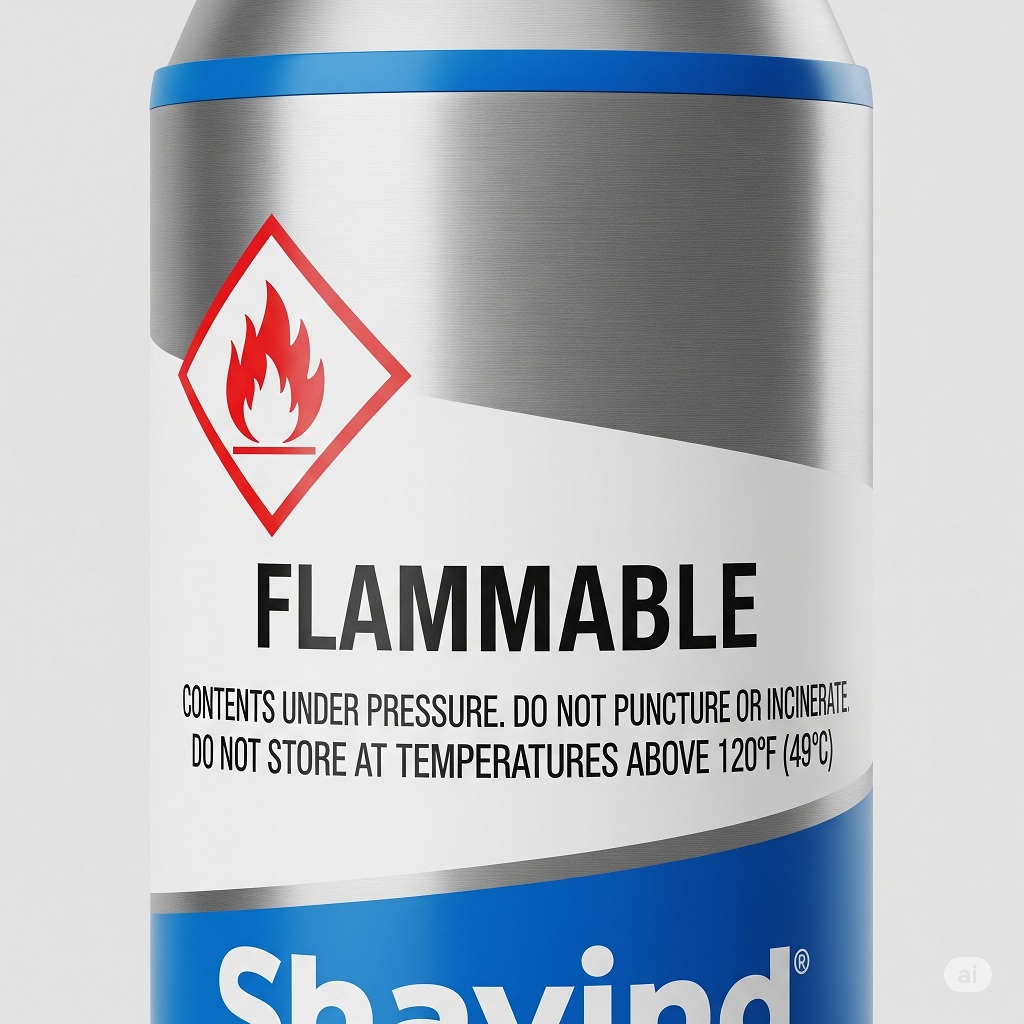
Have you ever wondered if that can of shaving cream in your bathroom is actually flammable? I did too, and I decided to dig into the science behind it. In this article, I’ll explore whether shaving cream is truly a fire hazard or just a myth.
We’ve all seen those warnings on aerosol cans about flammability, but how real is the risk? Join me as I uncover the truth about whether shaving cream can really catch fire. Let’s separate fact from fiction and find out if your morning grooming routine could potentially turn into a fiery situation.
Key Takeaways
- Understanding flammability ratings is crucial for assessing the fire risk of products like shaving cream.
- Knowing the ingredients in shaving cream is essential to evaluate its potential flammability.
- Propellants such as butane, propane, and isobutane in shaving cream contribute to its overall flammability.
- Common misconceptions about the flammability of shaving cream need clarification to ensure safety.
- Conducting a flammability test can help determine if a specific shaving cream is flammable, but precautions must be taken when performing the test.
Understanding Flammability Ratings
When it comes to understanding the flammability of products like shaving cream, it’s essential to look at the flammability ratings. These ratings provide valuable information on how easily a substance can ignite and burn.
Here are some key points to keep in mind:
- Flammable: Products with this rating can easily catch fire at normal temperatures.
- Combustible: Substances in this category require higher temperatures to ignite compared to flammable products.
It’s crucial to pay attention to these ratings on product labels, especially when dealing with items like shaving cream that come in aerosol cans. This way, you can make informed decisions about the potential fire hazards associated with the products you use in your daily routine.
In addition, understanding these ratings can help you take appropriate safety precautions to reduce the risk of accidents related to flammable substances. Always follow the manufacturer’s recommendations and guidelines to ensure safe handling and usage of these products.
Ingredients in Shaving Cream
When it comes to understanding if shaving cream is flammable, it’s essential to know the ingredients that make up these products. Here are some common ingredients found in shaving creams:
- Water: The base ingredient in most shaving creams, it helps create a smooth lather for a comfortable shave.
- Stearic Acid and Glycerin: These ingredients provide lubrication and help soften the hair and skin.
- Lauric Acid and Potassium Hydroxide: They contribute to the lathering properties of the shaving cream.
Knowing the ingredients in your shaving cream is crucial as some components may affect its flammability. It’s always advisable to check the product label for a list of ingredients and any warnings related to flammability. By being aware of what goes into your shaving cream, you can make informed decisions about its potential fire hazards.
The Role of Propellants
When exploring the flammability of shaving cream, it’s essential to consider the role of propellants. Propellants are substances used in aerosol products to create pressure, dispensing the product from its container. These propellants are often highly flammable, contributing to the overall flammability risk of the product.
In shaving creams, propellants such as butane, propane, and isobutane are commonly used to create the characteristic foam. These propellants are hydrocarbons that can ignite easily, increasing the potential fire hazard of the product.
Understanding the presence of propellants in shaving cream is crucial for consumers concerned about flammability. By being aware of the role these substances play in the product’s formulation, individuals can take the necessary precautions when handling and storing their shaving cream to minimize the risk of accidents.
Myth Busting: Common Misconceptions
I’ve come across many misconceptions about the flammability of shaving cream that need some clarifications. Let’s address a few of the most common ones:
- Myth: All shaving creams are equally flammable.
- Fact: Not all shaving creams have the same level of flammability. It depends on the propellants and other ingredients used in the formulation.
- Myth: It’s safe to use shaving cream near an open flame.
- Fact: Shaving cream can be flammable, especially aerosol ones containing propellants like butane, propane, and isobutane. It’s best to avoid using them near open flames.
- Myth: Only aerosol shaving creams are flammable.
- Fact: While aerosol shaving creams are more commonly associated with flammability risks due to their propellants, non-aerosol creams can also be flammable based on their ingredients.
- Myth: Storing shaving cream in a warm place is harmless.
- Fact: Storing shaving cream in warm places can increase the risk of flammability, especially if they contain flammable propellants. It’s important to store shaving cream in a cool, dry place.
Misconceptions about the flammability of shaving cream can lead to safety hazards if not addressed correctly. Understanding the facts can help users make informed decisions about handling and storing their shaving products.
Conducting the Flammability Test
When it comes to determining whether shaving cream is flammable, conducting a simple test can shed light on the matter. I’ll walk you through the steps to safely and effectively carry out this flammability test.
First, find a small amount of the shaving cream you want to test. Find a safe, open area away from any ignition sources and away from other flammable materials. Apply a small dot of shaving cream onto a non-flammable surface.
Next, take a lighter and carefully bring the flame close to the shaving cream. Observe the reaction of the shaving cream to the flame. If the shaving cream ignites, it indicates that the product is indeed flammable.
Remember, safety is paramount when conducting this test. Always have adult supervision, especially if minors are involved. If you are unsure or uncomfortable performing the test, it’s best to consult with the product manufacturer or a professional.
Now that you understand the basic steps for conducting a flammability test on shaving cream, you can make informed decisions about handling and storing this product with added safety measures in mind.
Conclusion
After learning about the flammability of shaving cream and how to conduct a proper flammability test, it’s clear that being aware of safety measures is crucial. By following the outlined steps and ensuring a controlled environment, users can determine the potential fire hazard of shaving cream. Remember, adult supervision is key, especially when minors are involved. If unsure about performing the test, consulting with the product manufacturer or a professional is always a wise decision. Taking the necessary precautions and understanding how to test the flammability of shaving cream empowers individuals to handle and store the product responsibly. Stay informed, stay safe!
Frequently Asked Questions
What is the purpose of conducting a flammability test for shaving cream?
The purpose of conducting a flammability test for shaving cream is to assess its potential to ignite and understand its fire hazard properties.
How should the flammability test for shaving cream be carried out?
The flammability test for shaving cream should be carried out in a controlled environment away from any ignition sources, following specific steps outlined for accurate and safe testing.
Why is adult supervision important during the flammability test for shaving cream?
Adult supervision is crucial during the flammability test, especially when minors are involved, to ensure safe handling of the product and proper execution of the testing procedure.
What should one do if unsure about conducting the flammability test for shaving cream?
If unsure about conducting the flammability test for shaving cream, it is advisable to consult with the product manufacturer or seek assistance from a professional for guidance.
